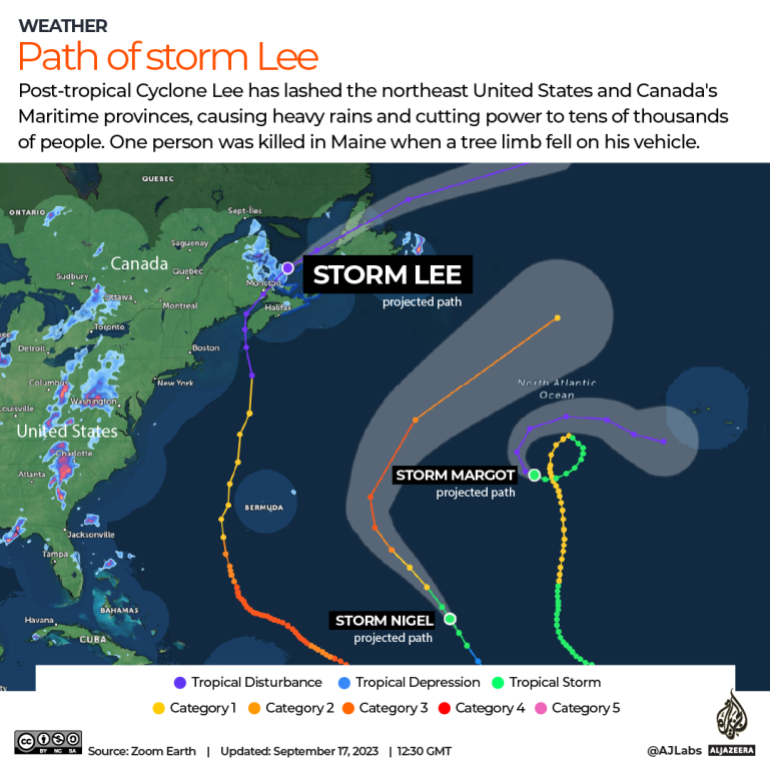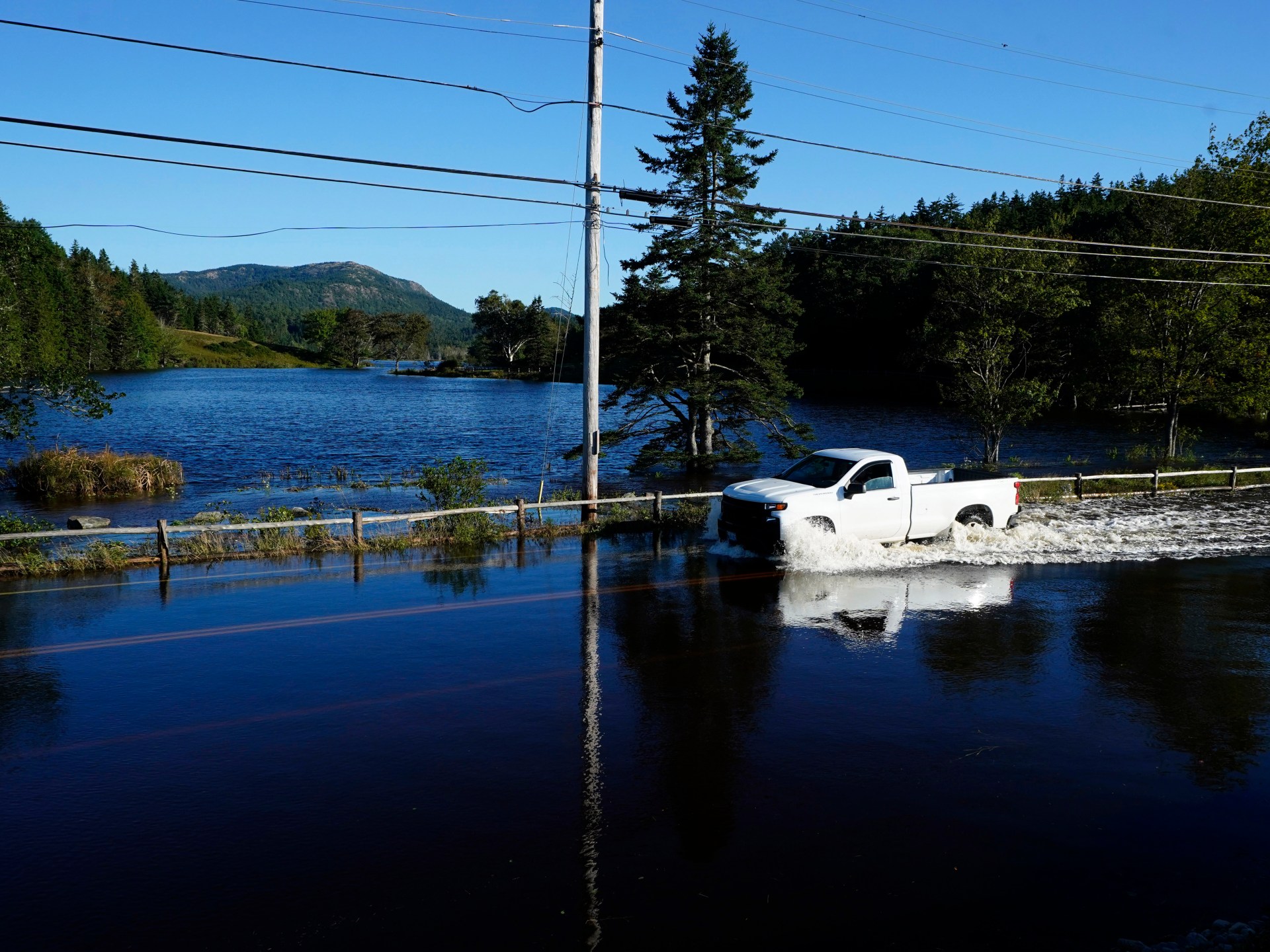While tropical storm warnings remain in effect across parts of Canada, officials predict Lee will dissipate in the coming days.
Atlantic storm Lee made landfall at near-hurricane strength Saturday, bringing destructive winds, rough surf and torrential rains to New England in the US and the Maritimes in Canada.
Meanwhile, officials withdrew some warnings for the region and predicted the storm would dissipate in the coming days.
The US National Hurricane Center said early Sunday that the post-tropical cyclone was in Canada – about 56km (35 miles) west of Charlottetown, Prince Edward Island, and about 362km (225 miles) west of Channel-Port aux Basques, Newfoundland.
The top sustained wind speed had dropped for a third time in 24 hours to 80km/h (50mph), with some higher gusts expected.
“Gradual weakening is forecast during the next couple of days, and Lee could dissipate on Tuesday,” the hurricane centre said.

The centre discontinued a tropical storm warning for the coast of Maine in the US late on Saturday and reported the Canadian Hurricane Centre had ended its tropical storm warning for New Brunswick and parts of Prince Edward Island.
But a tropical storm warning remained in effect for parts of Canada’s Nova Scotia, the Magdalen Islands and Prince Edward Island, with strong winds possibly leading to downed trees and power outages, the centre said.
Storm surges were expected to subside on Sunday after being forecast as up to 0.91 metres (3 feet) on Saturday along coastal areas, the hurricane centre said.
A 51-year-old motorist in Searsport, Maine died Saturday after a large tree limb fell on his vehicle on US Highway 1 during high winds. The post-tropical cyclone was also strong enough to cause power outages several hundred miles from its centre.
On Saturday, 11 percent of electricity customers in Maine lacked power, along with 27 percent of Nova Scotia, eight percent of New Brunswick and three percent of Prince Edward Island.

In Maine, a whale watch vessel broke free of its mooring and crashed ashore on Saturday. Lee also flooded coastal roads in Nova Scotia and took ferries out of service while fanning anxiety in a region still reeling from wildfires and severe flooding this summer. The province’s largest airport, Halifax Stanfield International, cancelled all flights.
“People are exhausted,” said Pam Lovelace, a councillor in Halifax. “It’s so much in such a small time period.”
The entire region has experienced an especially wet summer, ranking second in the number of rainy days in Portland, Maine — and Lee’s high winds toppled trees stressed by the rain-soaked ground in Maine, the most heavily wooded state in the US.
Lee shared some characteristics with 2012’s Superstorm Sandy. Both storms were once-strong hurricanes that became post-tropical cyclones — cyclonic storms that have lost most of their tropical characteristics — before landfall.
Lee was not expected to be nearly as destructive as Sandy, which caused billions of dollars in damage and was blamed for dozens of deaths in New York and New Jersey in the US.
Lee also was not anywhere near as severe as the remnants of Hurricane Fiona, which a year ago washed houses into the ocean in eastern Canada, knocked out power to most of two provinces and swept a woman into the sea, Canadian meteorologist Jill Maepea said.
